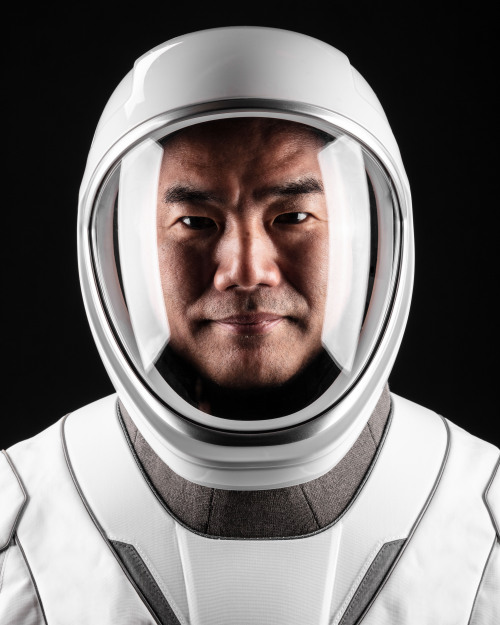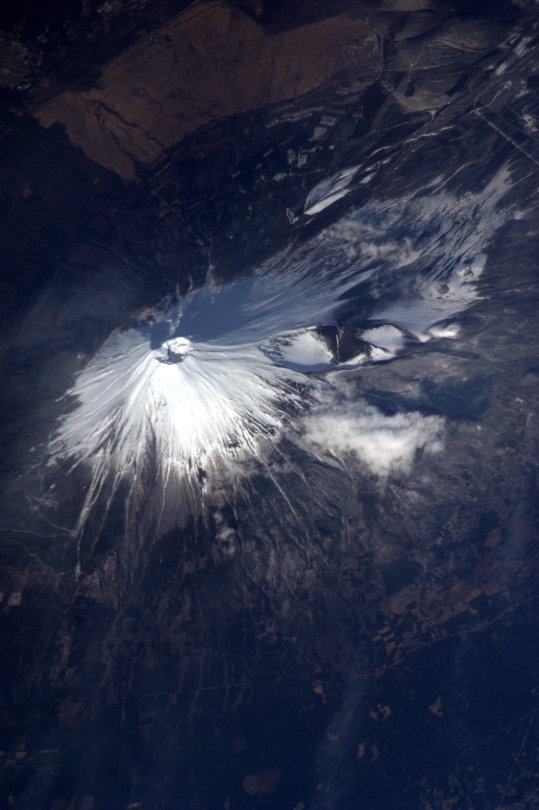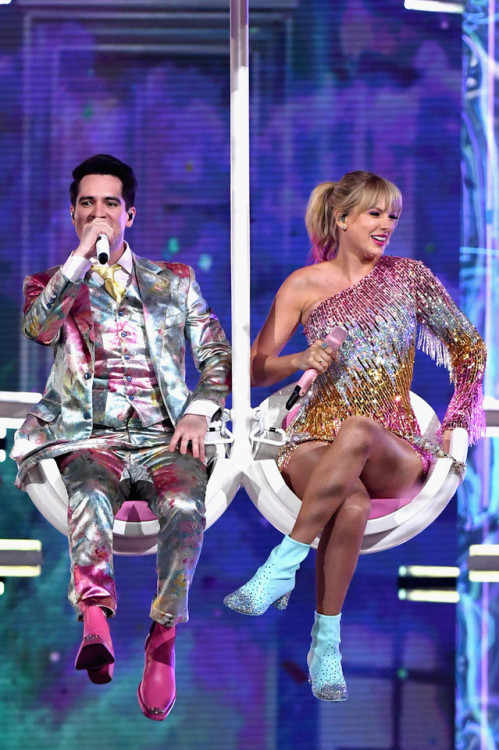Top 10 Things To Know For The Return Of Our Launch America Mission With SpaceX
Top 10 Things to Know for the Return of our Launch America Mission With SpaceX

History was made May 30 when NASA astronauts Robert Behnken and Douglas Hurley launched from American soil in a commercially built and operated American crew spacecraft on its way to the International Space Station.
Pictured above is the SpaceX Dragon Endeavour spacecraft that lifted off on the company’s Falcon 9 rocket from Launch Complex 39A at Kennedy Space Center in Florida and docked with the space station on May 31. Now, Behnken and Hurley are ready to return home in Endeavour for a splashdown off the coast of Florida, closing out a mission designed to test SpaceX’s human spaceflight system, including launch, docking, splashdown, and recovery operations. Undocking is targeted for 7:34 p.m. ET on August 1, with splashdown back to Earth slated for 2:42 p.m. on August 2. Watch our continuous live coverage HERE.
1. Where will Behnken and Hurley splash down?

Image: SpaceX’s Crew Dragon is guided by four parachutes as it splashes down in the Atlantic on March 8, 2019, after the uncrewed spacecraft’s return from the International Space Station on the Demo-1 mission.
Together with SpaceX, we are capable of supporting seven splashdown sites off the coast of Florida. The seven potential splashdown sites for the Dragon Endeavor are off the coasts of Pensacola, Tampa, Tallahassee, Panama City, Cape Canaveral, Daytona, and Jacksonville.
2. How will a splashdown location be chosen?
Splashdown locations are selected using defined priorities, starting with selecting a station departure date and time with the maximum number of return opportunities in geographically diverse locations to protect for weather changes. Teams also prioritize locations which require the shortest amount of time between undocking and splashdown based on orbital mechanics, and splashdown opportunities that occur in daylight hours.
Check out the Departure and Splashdown Criteria Fact Sheet for an in-depth look at selecting return locations, decision points during return, and detailed weather criteria.
3. How long will it take for Behnken and Hurley to return to Earth?

Return time for Behnken and Hurley will vary depending on the undock and splashdown opportunities chosen, with the primary opportunity taking between six and 30 hours.
4. What does the return look like? What are the major milestones?

Crew Dragon’s return home will start with undocking from the International Space Station. At the time of undock, Dragon Endeavour and its trunk weigh approximately 27,600 pounds. We will provide live coverage of the return from undocking all the way through splashdown.
There will be two very small engine burns immediately after hooks holding Crew Dragon in place retract to actually separate the spacecraft from the station. Once flying free, Dragon Endeavour will autonomously execute four departure burns to move the spaceship away from the space station and begin the flight home. Several hours later, one departure phasing burn, lasting about six minutes, puts Crew Dragon on the proper orbital path to line it up with the splashdown zone.
Shortly before the final deorbit burn, Crew Dragon will separate from its trunk, which will burn up in Earth’s atmosphere. The spacecraft then executes the deorbit burn, which commits Crew Dragon to return and places it on an orbit with the proper trajectory for splashdown. After trunk separation and the deorbit burn are complete, the Crew Dragon capsule weighs approximately 21,200 pounds.
5. How fast will Dragon Endeavour be going when it re-enters the Earth’s atmosphere? How hot will it get?
Crew Dragon will be traveling at orbital velocity prior to re-entry, moving at approximately 17,500 miles per hour. The maximum temperature it will experience on re-entry is approximately 3,500 degrees Fahrenheit. The re-entry creates a communications blackout between the spacecraft and Earth that is expected to last approximately six minutes.
6. When do the parachutes deploy?

Image: SpaceX’s final test of Crew Dragon’s Mark 3 parachute system on Friday, May 1, 2020, that will be used during the Demo-2 splashdwon mission.
Dragon Endeavour has two sets of parachutes will that deploy once back inside Earth’s atmosphere to slow down prior to splashdown. Two drogue parachutes will deploy at about 18,000 feet in altitude while Crew Dragon is moving approximately 350 miles per hour. Four main parachutes will deploy at about 6,000 feet in altitude while Crew Dragon is moving approximately 119 miles per hour.
7. Who recovers the crew and the Dragon Endeavour capsule from the water? What vehicles and personnel are involved?

Image: SpaceX’s Crew Dragon is loaded onto the company’s recovery ship, Go Searcher, in the Atlantic Ocean, about 200 miles off Florida’s east coast, on March 8, after returning from the International Space Station on the Demo-1 mission.Credits: SpaceX
For splashdown at any of the seven potential sites, SpaceX personnel will be on location to recover the capsule from the water. Two recovery ships, the Go Searcher and the Go Navigator, split locations between the Gulf of Mexico and the Atlantic Ocean off the coast of Florida. On either ship will be more than 40 personnel from SpaceX and NASA, made up of spacecraft engineers, trained water recovery experts, medical professionals, the ship’s crew, NASA cargo experts, and others to assist in the recovery.
8. How long after splashdown until Behnken and Hurley are out of the capsule?

Image: NASA astronaut Doug Hurley, along with teams from NASA and SpaceX, rehearse crew extraction from SpaceX’s Crew Dragon, on August 13, 2019. Credits: NASA/Bill Ingalls
Immediately after splashdown has occurred, two fast boats with SpaceX personnel deploy from the main recovery ship. The first boat checks capsule integrity and tests the area around the Crew Dragon for the presence of any hypergolic propellant vapors. Once cleared, the personnel on the boats begin preparing the spaceship for recovery by the ship. The second fast boat is responsible for safing and recovering Crew Dragon’s parachutes, which have at this point detached from the capsule and are in the water.
At this point the main recovery vessel can move in and begin to hoist the Crew Dragon capsule onto the main deck. Once the capsule is on the recovery vessel, it is moved to a stable location for the hatch to be opened for waiting medical professionals to conduct initial checks and assist Behnken and Hurley out of Dragon Endeavour.
This entire process is expected to take approximately 45 to 60 minutes, depending on spacecraft and sea state conditions.
9. Where do Behnken and Hurley go after they are out of the capsule?
Immediately after exiting the Crew Dragon capsule, Behnken and Hurley will be assisted into a medical area on the recovery ship for initial assessment. This is similar to procedures when welcoming long-duration crew members returning home on Soyuz in Kazakhstan.
After initial medical checks, Behnken and Hurley will be returned to shore either by traveling on the primary recovery ship or by helicopter. Helicopter returns from the recovery ship are the baseline for all splashdown zones except for the Cape Canaveral splashdown site, with travel times ranging from approximately 10 minutes to 80 minutes. The distance from shore will be variable depending on the splashdown location, ranging from approximately 22 nautical miles to 175 nautical miles.
Once returned to shore, both crew members will immediately board a waiting NASA plane to fly back to Ellington field in Houston.
10. What happens next?

Image: NASA astronauts Shannon Walker, Victor Glover Jr. and Mike Hopkins and Japan’s Soichi Noguchi train in a SpaceX Crew Dragon capsule. Credit: SpaceX
Meanwhile, Dragon Endeavour will be returned back to the SpaceX Dragon Lair in Florida for inspection and processing. Teams will examine the data and performance of the spacecraft throughout the test flight to complete the certification of the system to fly operational missions for our Commercial Crew and International Space Station Programs. The certification process is expected to take about six weeks. Following successful certification, the first operational mission will launch with Crew Dragon commander Michael Hopkins, pilot Victor Glover, and mission specialist Shannon Walker – all of NASA – along with Japan Aerospace Exploration Agency (JAXA) mission specialist Soichi Noguchi will launch on the Crew-1 mission from Launch Complex 39A at NASA’s Kennedy Space Center in Florida. The four crew members will spend six months on the space station.
The launch is targeted for no earlier than late-September.
Make sure to follow us on Tumblr for your regular dose of space: http://nasa.tumblr.com
More Posts from Thehkr and Others
The Perseid Meteor Shower Is Here!

Image Credit: NASA/Bill Ingalls
The Perseids are at their peak this week!
The Perseid meteor shower, one of the biggest meteor showers of the year, will be at its brightest early in the morning on Wednesday, August 12. Read on for some tips on how to watch the night sky this week – and to find out: what exactly are the Perseids, anyway?

Credit: NASA/Bill Ingalls
Your best chance to spot the Perseids will be between 2 AM and dawn (local time) the morning of August 12. Find a dark spot, avoid bright lights (yes, that includes your phone) and get acclimated to the night sky.
Your eyes should be at peak viewing capacity after about 30 minutes; though the Moon may block out some of the dimmer meteors, you should still be able to see up to 15-20 an hour. If you’re not an early bird, you can try and take a look soon after sunset (around 9 PM) on the 11th, though you may not see as many Perseids then.

Credit: NASA/MEO
If it’s too cloudy, or too bright, to go skywatching where you are, you can try again Wednesday or Thursday night – or just stay indoors and watch the Perseids online!
Our Meteor Watch program will be livestreaming the Perseids from Huntsville, Alabama on Facebook (weather permitting), [link to come] starting around 9 p.m. EDT on August 11 and continuing through sunrise.
So… why are they called the Perseids?
Because all of a meteor shower’s meteors have similar orbits, they appear to come from the same place in the sky – a point called the radiant.

The radiant for the Perseids, as you might guess from the name, is in the constellation Perseus, found near Aries and Taurus in the night sky.
But they’re not actually coming from Perseus, right?

Credit: NASA/Joel Kowsky
Right! The Perseids are actually fragments of the comet Swift-Tuttle, which orbits within our solar system.
If you want to learn more about the Perseids, visit our Watch the Skies blog or check out our monthly “What’s Up” video series. Happy viewing!
Make sure to follow us on Tumblr for your regular dose of space: http://nasa.tumblr.com

NASA Spotlight: Astronaut Soichi Noguchi
Soichi Noguchi was selected as an astronaut with the Japan Aerospace Exploration Agency in 1996. A native of Yokohama, Kanagawa, he is currently a mission specialist for NASA’s SpaceX Crew-1 launch taking flight to the International Space Station on Nov. 14. Soichi will be the first international crewmember on Crew Dragon and the first international partner astronaut to fly aboard three types of orbital spacecraft – the U.S. space shuttle, the Russian Soyuz, and now the SpaceX Crew Dragon! Talk about impressive. He received a B.S. in Aeronautical Engineering in 1989, master’s degree in Aeronautical Engineering in 1991, Doctor of Philosophy in Advanced Interdisciplinary Studies in 2020, all from the University of Tokyo.
Soichi took time from preparing for his historic mission to answer questions about his life and career:
You recently earned a doctorate in philosophy. What made you do it?
After my second flight, I started this research about your sensory system in zero gravity. I used a my own personal video, which I took during my last two flights at the International Space Station. I had a lot of interesting discussions amongst young professionals and students at the University of Tokyo about the research. It was a fun experience – but I would not do it again!
Space is a risky business. Why do it?
Space IS definitely a risky business. But the reward is higher than the risk so that’s why we take it.
Do you have a message for boys and girls in Japan who are interested in science and engineering?
Three words: Space. Is. Waiting.

Aside from mission objectives and tasks, what’s a personal goal for this mission?
We have a lot of interesting missions to do, but my personal goal is to return home with lots of fun stories.

What was it like to get the phone call to become an astronaut?
It was 25 years ago, but I still remember the voice vividly. I got a call from Dr. Mamoru Mohri, the very first JAXA astronaut, and he said “Welcome to the Astronaut Corps.” When I got the call to be part of the Crew-1 mission, I was a lot less nervous than when I was assigned to my first mission, but the excitement remains the same.
Can you describe your crew mate Mike Hopkins in one sentence?
He is a natural leader that takes care of the team really well, and he’s fun to play around with.

Star Trek or Star Wars?
Star Wars… just because!

Can you share your favorite photo or video that you took in space?
My favorite photo is Mount Fuji because I see the mountain almost every day when I was a child. It’s definitely breathtaking to see Mount Fuji from space.

What personal items did you decide to pack for launch and why?
I have lots of family photos, and I would put it inside my sleep station. Definitely one of the most challenging things about spaceflight is not experiencing zero gravity, not the rocket, but time away from family.
How would you describe spacewalking outside the space station?
It’s an excursion. The view of the Earth is just breathtaking because you are just one glass away from the vacuum of space. There’s nothing between you and Earth.

What are you most excited about for the future of human space exploration?
I would say I’m most excited for interplanetary travel to become more common so that the school kids can go to Mars on their field trip.
What would you say to someone looking to follow in your footsteps?
Don’t worry, be happy!
How has spaceflight evolved since your first launch and stay aboard the International Space Station in 2005?
This is definitely an exciting moment. We’re starting to see more players in the game. SpaceX is the frontrunner, but soon we’ll see Boeing, Sierra Nevada and Axiom. So the International Space Station will soon have more players involved, and it will be a lot more fun!
Thank you for your time, Soichi, and good luck on your historic mission! Get to know a bit more about Soichi and his NASA astronaut crew mates Victor Glover, Michael Hopkins, and Shannon Walker in the video above.
Watch LIVE launch coverage beginning at 3:30 p.m. EST on Nov. 14 HERE.
Make sure to follow us on Tumblr for your regular dose of space: http://nasa.tumblr.com
Travel to Exotic Destinations in our Galaxy!
The planets beyond our solar system – exoplanets – are so far away, often trillions of miles, that we don’t have the technology to truly see them. Even the best photos show the planets as little more than bright dots. We’ve confirmed more than 5,000 exoplanets, but we think there are billions. Space telescopes like Hubble aren’t able to take photos of these far-off worlds, but by studying them in different wavelengths of light (colors), we’ve learned enough about conditions on these planets that we can illustrate them.

We know, thanks to the now-retired Spitzer Space Telescope, that there is a thick atmosphere on a planet called 55 Cancri e about 40 light-years away. And Hubble found silicate vapor in the atmosphere of this rocky world. We also know it’s scorching-close to its Sun-like star, so … lava. Lots and lots of lava. This planet is just one of the many that the James Webb Space Telescope will soon study, telling us even more about the lava world!
You can take a guided tour of this planet (and others) and see 360-degree simulations at our new Exoplanet Travel Bureau.
Travel to the most exotic destinations in our galaxy, including:
Kepler-16b, a planet with two suns.

Then there’s PSO J318.5-22, a world with no sun that wanders the galaxy alone. The nightlife would never end on a planet without a star.

TRAPPIST-1e, which will also be studied by the Webb Space Telescope, is one of seven Earth-sized planets orbiting a star about 40 light-years from Earth. It’s close enough that, if you were standing on this exoplanet, you could see our Sun as a star in the Leo constellation! You can also see it on the poster below: look for a yellow star to the right of the top person’s eye.

We haven’t found life beyond Earth (yet) but we’re looking. Meanwhile, we can imagine the possibility of red grass and other plants on Kepler-186f, a planet orbiting a red dwarf star.

We can also imagine what it might be like to skydive on a super-Earth about seven times more massive than our home planet. You would fall about 35% faster on a super-Earth like HD 40307g, making for a thrilling ride!

Any traveler is going to want to pick up souvenirs, and we have you covered. You can find free downloads of all the posters here and others! What are you waiting for? Come explore with us!

Make sure to follow us on Tumblr for your regular dose of space!
Image credits: NASA/JPL-Caltech

The Path to High Adventure Begins With Scouting!

Former NASA astronaut and Girl Scout alumna Jan Davis eating Girl Scout Cookies inside the shuttle Endeavour on Sept. 12, 1992. Image credit: NASA
Leadership, service, being prepared and doing your best – these qualities are exemplified by our astronauts, but are also shared by the Girl Scouts! Our astronaut corps has many scout alumnae, and over the years they’ve been breaking barriers and making names for themselves at NASA.
Today marks the 108th birthday of Girl Scouts in the United States, which has been inspiring generations of girls through leadership and STEM (science, technology, engineering and mathematics) activities to empower the explorers of today and tomorrow. To celebrate, we’re highlighting some of our Girl Scout alumnae over the years!

NASA astronaut and Girl Scout alumna Sunita Williams, who served as an International Space Station commander and spent 322 days in space during two spaceflight expeditions.
Former Scouts have served as crew members on numerous spaceflight missions.

From left: Susan Helms, the first female International Space Station crew member; Eileen Collins, the first woman to pilot and command a space shuttle; and Dr. Kathy Sullivan, the first American woman to perform a spacewalk.
Former Girl Scouts flew on more than one-third of the space shuttle missions and were pioneering forces as women began making their mark on human spaceflight. The first female crew member to serve on the International Space Station, the first to pilot and command a space shuttle and the first American woman to spacewalk were all Scout alumnae.
They continue to break records, such as the first three all-woman spacewalks…

Girl Scout alumnae and NASA astronauts Christina Koch and Jessica Meir made history when they conducted the first ever all-woman spacewalk on Oct.18, 2019. They went on to complete two more spacewalks, successfully completing their task of upgrading the space station’s battery charge/discharge unit. Christina and Jessica’s historic spacewalk was a testament to the growing number of women (and Girl Scouts) joining our astronaut corps; it is a milestone worth celebrating as we look forward to putting the first woman on the Moon with our Artemis Program!
….and the longest spaceflight ever by a woman!

NASA astronaut Christina Koch smiles for a selfie while completing tasks during a spacewalk outside the International Space Station.
Koch went on to seal her name in the record books by surpassing Peggy Whitson’s record for the longest single spaceflight in history by a woman!
Understanding how the human body adjusts to things like weightlessness, radiation and bone-density loss is crucial as we look forward to embarking on long-duration spaceflights to the Moon and Mars. Thanks to former astronaut Scott Kelly’s Year in Space mission, we’ve been able to observe these changes on a biological male. Now, thanks to Christina’s mission, we are able to observe these changes on a biological female.
Girl Scout alumnae will also help lead human exploration farther than ever before as members of our Artemis generation!

From left: NASA astronauts Kayla Barron, Jessica Watkins and Loral O’Hara
On January 10, 2020 we welcomed 11 new astronauts to our ranks – including three Girl Scout alumnae! As part of the first-ever class of astronauts under our Artemis lunar exploration program, Kayla Barron, Jessica Watkins and Loral O’Hara are now qualified for assignments including long-duration missions to the International Space Station, the Moon and Mars.
They took a moment after graduation to share inspiration and insight for current and future Scouts!
Q: A question from the Girl Scouts: What inspires you?
A: “Being a part of an awesome team has always been what inspires me. Whether it’s your Girl Scout troop, a sports team, your class – I think for me always the people around me who push me to succeed and support me when I make mistakes and help me become my best self is what inspires me to show up and do my best.” - NASA astronaut Kayla Barron
Q: How has being a Girl Scout helped you in becoming an astronaut?
A: “Being in the Girl Scouts when I was younger was really cool because, well, first it was just a group of my friends who got to do a lot of different things together. But it really gave us the opportunity to be exposed to a lot of different areas. Like we’d get to go camping. We’d get to ride horses and learn all of these different skills, and so that variety of skill set I think is very applicable to being an astronaut.” - NASA astronaut Loral O’Hara
Q: What would your advice be for the next generation of Girl Scout astronauts?
A: “My advice would be to find something that you’re passionate about. Ideally something in the STEM fields: Science, Technology, Engineering or Mathematics, and to pursue that thing that you’re interested in. Pursue that passion, whatever it is. And don’t give up on your dreams, and continue to follow them until you arrive where you want to be.” - NASA astronaut Jessica Watkins
To all the Girl Scouts out there, keep reaching for the stars because the sky is no longer the limit!
Astronaut applications are OPEN until March 31 for the next class of Artemis generation astronauts who will embark on missions to the International Space Station, the Moon and Mars. If you’re interested in applying to #BeAnAstronaut or just want to learn more, click HERE.
Make sure to follow us on Tumblr for your regular dose of space: http://nasa.tumblr.com



Guy Bluford Changed the Course of Space History
On Aug. 30, 1983, Guion Bluford, better known as Guy, became the first African American to fly to space. An accomplished jet pilot and aerospace engineer, Bluford became part of NASA’s 1978 astronaut class that included the first African American, the first Asian American, and the first women astronauts.
He and the other crew members of mission STS-8 were aboard the orbiter Challenger as it lifted off from Kennedy Space Center in Florida; it was the first nighttime launch and landing of the Space Shuttle program. While aboard, he and the other crew members deployed the Indian National Satellite (INSAT-1B), operated a Canadian-built robot arm, conducted experiments with live cell samples, and participated in studies measuring the effects of spaceflight on humans.
Guy Bluford chased his childhood dream of becoming an aerospace engineer, and in doing so, changed history and encouraged other Black astronauts to follow in his footsteps.
Make sure to follow us on Tumblr for your regular dose of space—and for milestones like this!



BMW M3 Interior | via
-
 raqstarnails liked this · 2 years ago
raqstarnails liked this · 2 years ago -
 mona-vainy liked this · 2 years ago
mona-vainy liked this · 2 years ago -
 spaceexplorationgenz liked this · 3 years ago
spaceexplorationgenz liked this · 3 years ago -
 mrclaw61 liked this · 3 years ago
mrclaw61 liked this · 3 years ago -
 powerfrog reblogged this · 4 years ago
powerfrog reblogged this · 4 years ago -
 felp7k liked this · 4 years ago
felp7k liked this · 4 years ago -
 wayward-coffee-raccoon liked this · 4 years ago
wayward-coffee-raccoon liked this · 4 years ago -
 atranz79 liked this · 4 years ago
atranz79 liked this · 4 years ago -
 blotto liked this · 4 years ago
blotto liked this · 4 years ago -
 gayidioot liked this · 4 years ago
gayidioot liked this · 4 years ago -
 lijretta liked this · 4 years ago
lijretta liked this · 4 years ago -
 sue49universe liked this · 4 years ago
sue49universe liked this · 4 years ago -
 shailendra65631 reblogged this · 4 years ago
shailendra65631 reblogged this · 4 years ago -
 shailendra65631 liked this · 4 years ago
shailendra65631 liked this · 4 years ago -
 wingspanmatters liked this · 4 years ago
wingspanmatters liked this · 4 years ago -
 lunasnownature liked this · 4 years ago
lunasnownature liked this · 4 years ago -
 voldysgonemodly liked this · 4 years ago
voldysgonemodly liked this · 4 years ago -
 go3dprinting reblogged this · 4 years ago
go3dprinting reblogged this · 4 years ago -
 setwelven liked this · 4 years ago
setwelven liked this · 4 years ago -
 knight-kennedy liked this · 4 years ago
knight-kennedy liked this · 4 years ago -
 saltythexfilesindianjonescop liked this · 4 years ago
saltythexfilesindianjonescop liked this · 4 years ago -
 texboge liked this · 4 years ago
texboge liked this · 4 years ago -
 duudone liked this · 4 years ago
duudone liked this · 4 years ago -
 zuljpr liked this · 4 years ago
zuljpr liked this · 4 years ago -
 pineconeishere liked this · 4 years ago
pineconeishere liked this · 4 years ago -
 oshri liked this · 4 years ago
oshri liked this · 4 years ago